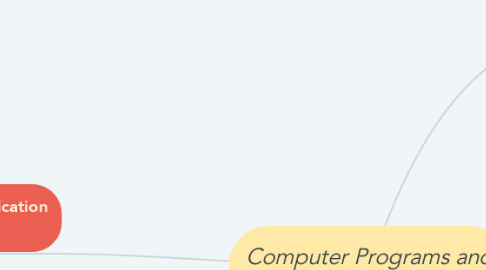Computer Programs and Programming Language
by Syahir Syaz


1. Programming Application Domains
1.1. Business Application -Commercial data processing was one of the earliest commercial applications of computers.
1.2. Artificial Intelligence -emulating human-style reasoning on a computer. -involve symbolic computation, where most of the symbols are names and not numbers. -requires more flexibility than other programming domains. -Artificial Intelligence Language : The first AI language was IPL (International Processing Language, developed by the Rand Corporation. Its low-level design led to its limited use.
1.3. System Programming -Use assembly language because its power and efficiency -Ex: CPL, BCPL, C++
1.4. Web Software - Eclectic collection of languages: Markup (e.g., HTML) – used for annotating a document in a manner that can be distinguished from the text. Scripting (e.g., PHP) - the language that enable the script to run these commands and typically include control structures such as if-then-else and while-do. General-purpose (e.g., Java) – can be used for a wide range of programming jobs.
2. Overview of computer program and programming language
2.1. Computer Program -Set of instructions computer needs for process the data into information -Consists Input>Process>Output/Storage
2.2. Programming Language -System of signs used to communicate a task/algorithm to a computer, causing the task to be performed. -The task to be performed is call computation, which follows absolutely precise and unambiguous rules. -Contains set of instructions, data and rules for construct a program.
2.2.1. Machine Language -Consists individual instruction that will be executed by CPU at one time -Using binary code
2.2.2. Low Level Language (Assembly Language) -Designed for specific family of processor -Consists of symbolic instructions directly related and assembled to machine language
2.2.3. High Level Language -Ex: C, C++, Java, VB -Eliminate the technicalities of a particular computer -Had been generate by many low-level language

